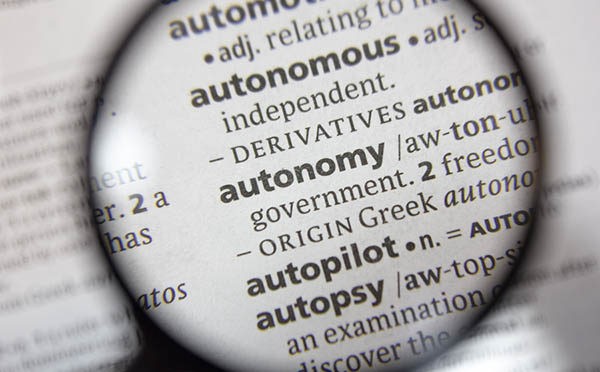
One of the fundamental human needs we have at work is the ability to control our own approach to tasks.
If we are simply ‘doing a job’, it is not surprising that our motivation will soon atrophy and die.
What is it that makes us want to do this?
Why is this aspect of autonomy so important to us?
Deci & Ryan’s Self-Determination Theory concerns our need to control the origins of our behaviour, which in turn drives our intrinsic motivation. Think for a moment…do you feel at your best doing a repetitive job, or when you have a say in how that role can be fulfilled and driven?
What is intrinsic motivation? One source has it as ‘the desire to complete a task that stems from an inherent interest and curiosity in the activity itself, rather than through coaxing by external influences (extrinsic motivation).’
Deci & Ryan’s Self-Determination theory found that when we feel our actions originate from an external source, our overall motivation levels decrease because we feel we are being controlled. Without a sense of freedom in how (or why) we approach a task, we will eventually begin to lose interest.
You may be thinking at this point ‘I would like my employees to think for themselves, but we have standards and rules, health and safety components, and targets to reach. If I gave autonomy to all my employees, there would be anarchy and skiving off’
However, we can all agree that a greater sense of responsibility boosts motivation, and results in employees investing more time and energy into their role. So, we need to balance the ‘rules and regulations’ with the ability to get people to think of the ‘how’ things can be improved.
Remember that we are still able to feel a sense of control while collaborating in teams or fulfilling the requests for others – all that is required is that there are no conflicts of interest, and that our interactions align with our own personal goals and values.
So, how can we introduce a feeling of autonomy into the workplace, and allow people to think more for themselves?
Well, it can start with asking the fundamental questions about how people do their jobs, when we do them and actually where we do them.
We discuss a lot about the difference between management and leadership. Management is where we get people to do what we tell them to do. In other words, we manage activity.
Leadership is where we get people to agree the business goals we need achieving and then helping them to think through how those goals might be achieved. In other words, we manage results.
This means that people need to be involved in goal-setting and have some form of autonomy in how to achieve them. This involvement immediately starts the ownership principle, where people recognise they are in charge and have control over how a task is completed.
Richard Branson caused a storm of discussion when he introduced the concepts of unlimited holidays into some of the Virgin Group. But this flexibility is a unique and raw form of autonomy that says, ‘we trust you to get your job done to the levels we have set, and if that means you can take longer breaks, then you have earned them.’
It would not work in every environment, of course. But the message it sends is that we know you need work/life balance and we care about your mental health, and want to increase your mental resilience. The increased autonomy this brings helps colleagues to take the responsibility for results, not just activity.
Another form of giving autonomy is the concept of where the work is actually carried out. Effectively, this means that the physical location of work is no longer a pre-requisite to getting results. For one of our clients, the daily commute for some of their team was between one and two hours, through London traffic, each way. That’s up to four hours a day of wasted energy sat in traffic or on the tube,
They devised a way for people to work from home, from a nearby Regus office complex or from client offices. This helped people to become de-stressed and allowed for greater autonomy in determining exactly where work was to be carried out. As long as results were obtained, they didn’t mind too much where it was done. They only required people to come into the physical office when important, face-to-face meetings were the only way to progress, and this turned out to be no more than one or two days per week.
What does it take for this autonomy to work effectively? Of course, it’s trust. And a heap of good intentions from all involved.
This is created by getting every staff member involved in the vision and mission of the company and allowing people to have a say in what has to be achieved. It’s not a culture that is developed overnight. It evolves over time by gaining everyone’s trust and helping them to become trustworthy.
The moment you say, ‘I have to control my people or they won’t work’, then this whole concept of autonomy is out of the window, and trust is broken.
Instead, see autonomy as something you slowly introduce, allowing people to start making decisions on how things should be carried out and what the results are you are seeking.
By allowing people to have more control over what they can and want to achieve, you start to drive this concept of autonomy and allow people to be more involved in everything they are doing.
That will then allow for greater responsibility and commitment, as ownership becomes the normal way of working.

Written by Sean McPheat
CEO of MTD Training and Amazon bestselling author. Sean writes about leadership, business, and personal growth, drawing on 20+ years of experience helping over 9,000 companies improve performance.
Updated on: 29 May, 2019
Related Articles

Search For More 